Since the inauguration of Malagiri school in 2011 it has brought many benefits to local families. The pressures of survival are eased as working families know their children are being cared for and are receiving an education.
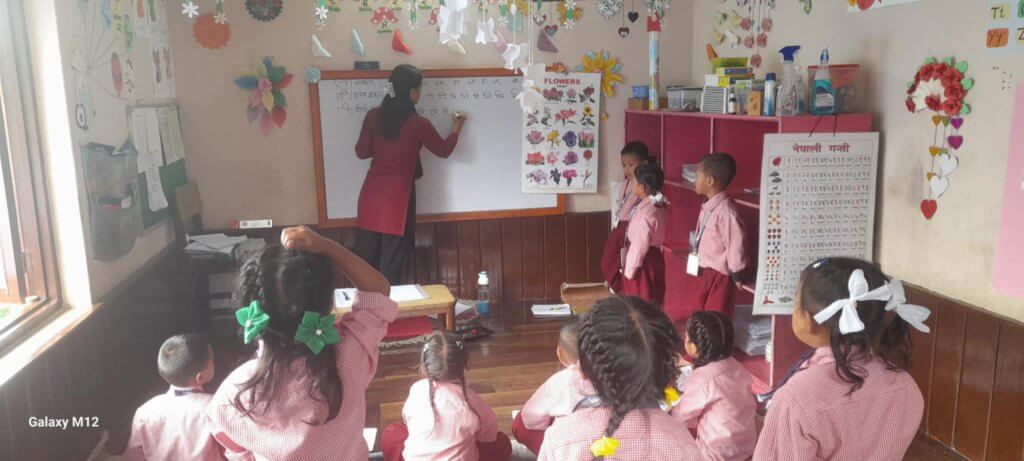
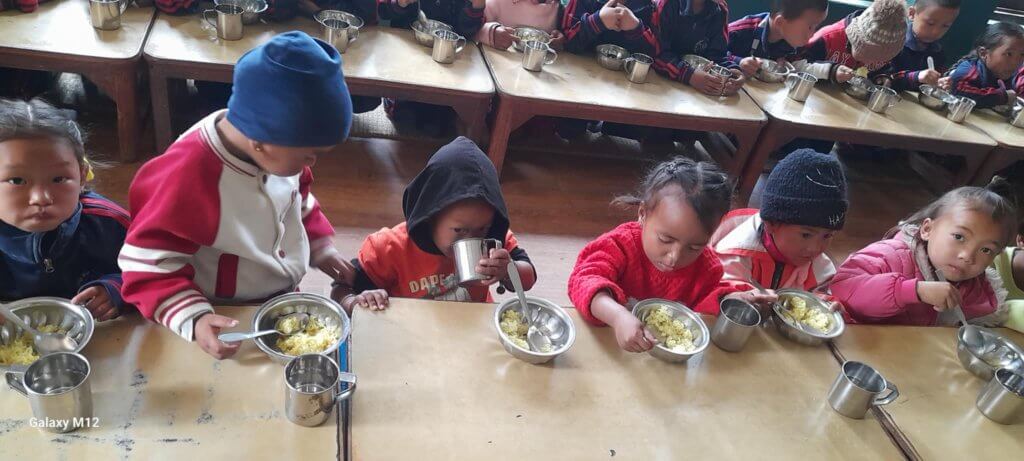
The school day begins at 8.00 am when the children arrive to wash and prepare themselves for breakfast at 8.30. At 9.00 they have an assembly, followed by a full and varied day ahead. The school has 4 classes: nursery; Lower Kindergarten; Upper Kindergarten; and Grade One.
The local language in Malagiri is Tamang which is only used by about 5% of the population in Nepal therefore it is important for our school to teach the official language which is Nepali. English is also taught for further education and many work opportunities especially tourism.
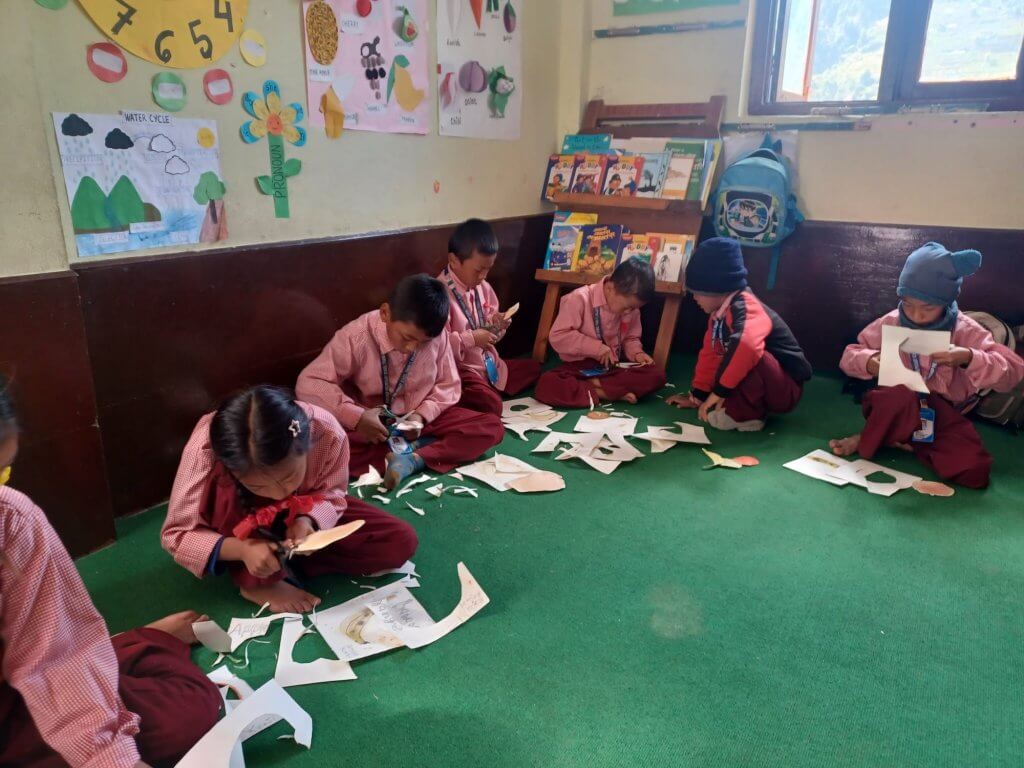
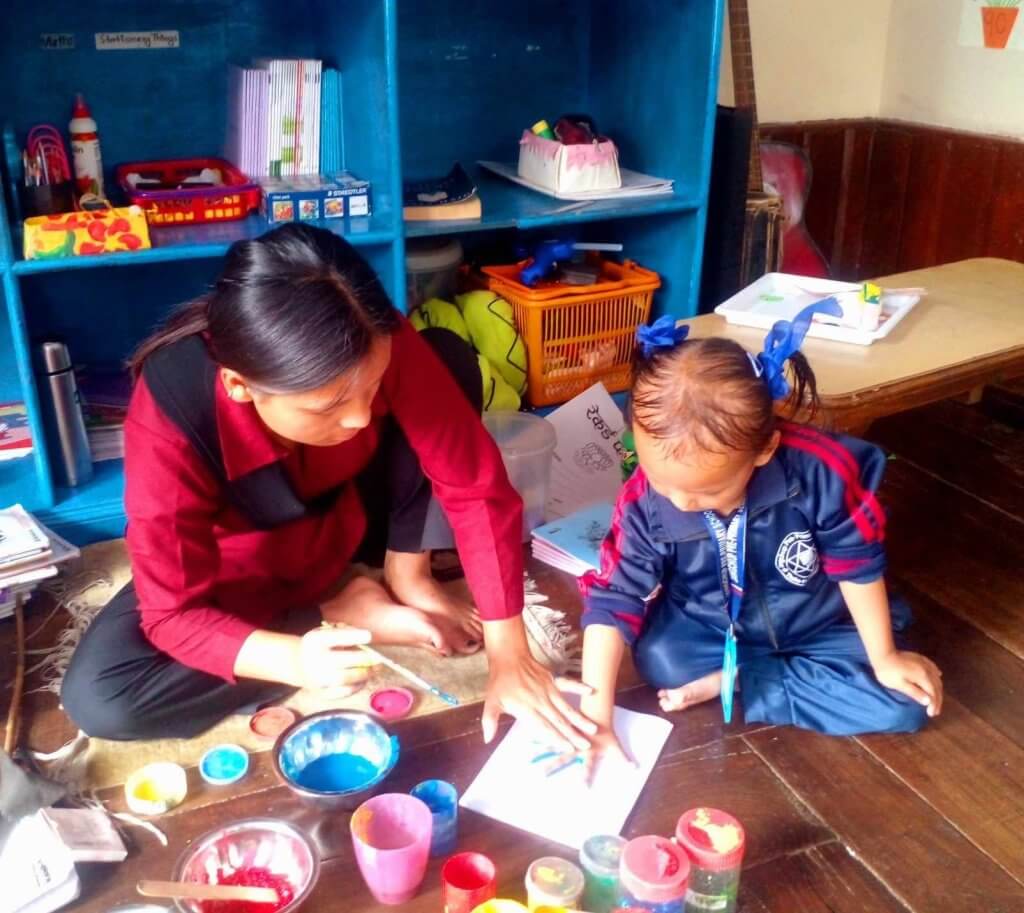
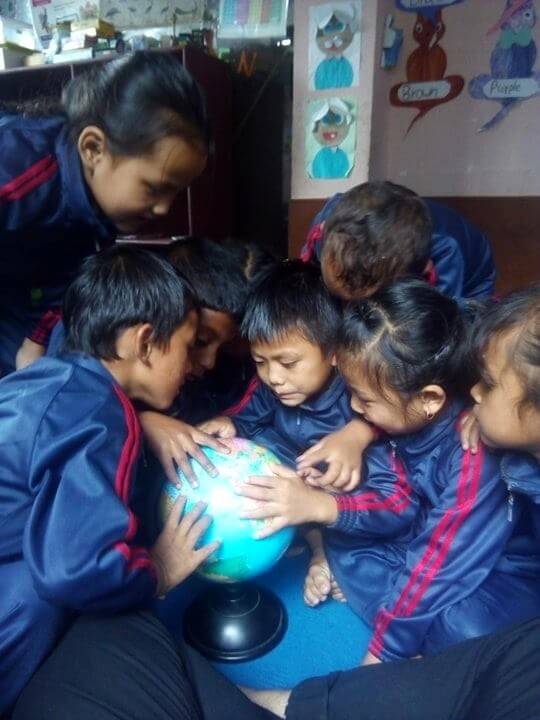
Each teacher is responsible for their own class throughout the day and the routine is prepared by the teacher according to their class needs. Teaching plans can include a mix of subjects from Nepali, English, number, Montessori materials, yoga, meditation, drawing, painting, story time, games and sports, dance, singing and rhymes to enhance the learning potential. Rote learning is also used as appropriate.
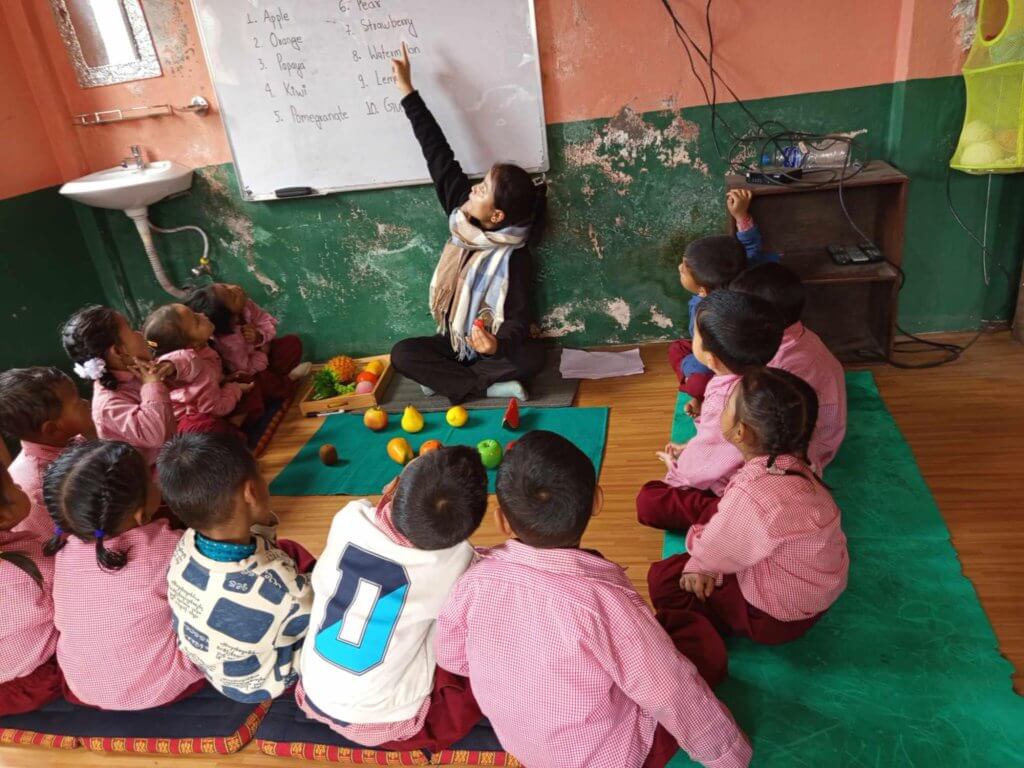
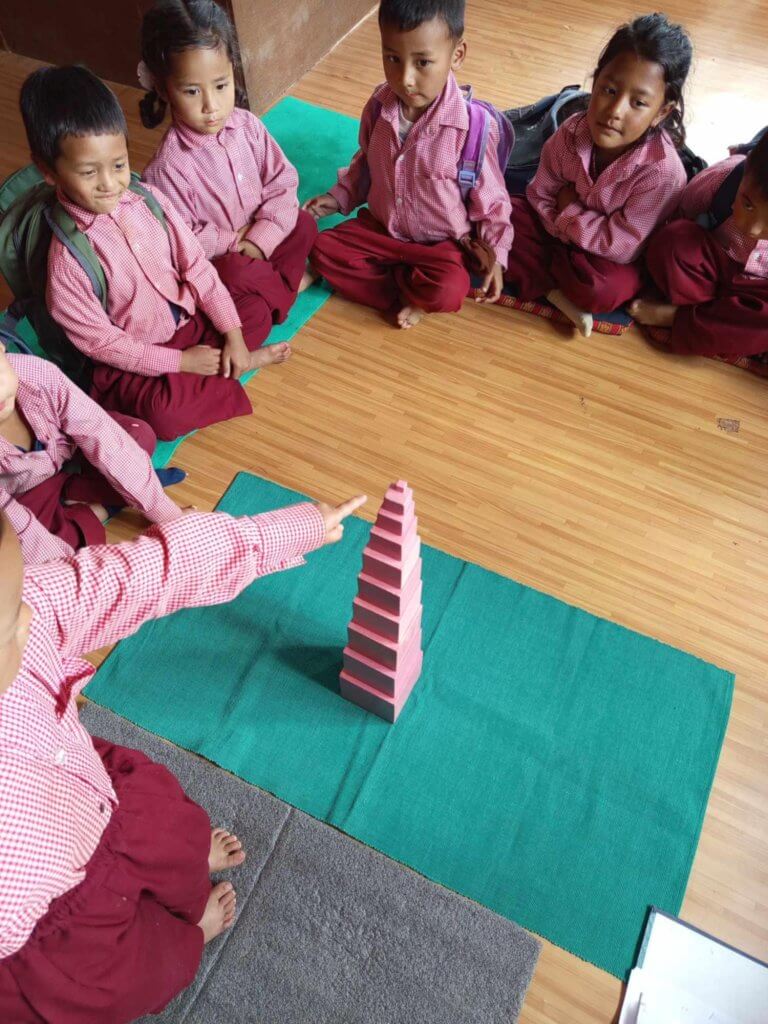
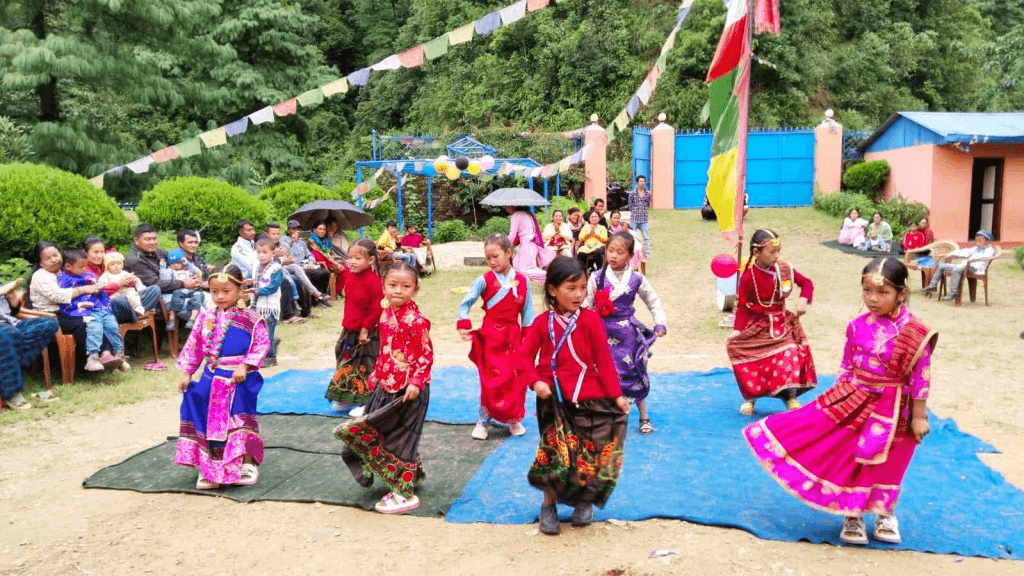
Since receiving a Montessori training, teachers use specialised accessories in the lessons.
Head teacher Gautam explains:
“The children use this equipment by first touching and feeling it with their hands. They explore the shape, size, texture, and weight. While doing this, they also try to guess what it is made of. This helps them develop their sense of touch and observation.
After exploring, they share with the teacher and other children what they have discovered—for example, the shape (whether it’s round, square, long, etc.), the material (wood, metal, plastic), and how it feels (smooth, rough, heavy, light). They even try to match or sort it with similar items on their own.
This process encourages independent thinking, language development, and hands-on learning. It also helps them to become more confident in expressing their ideas.”
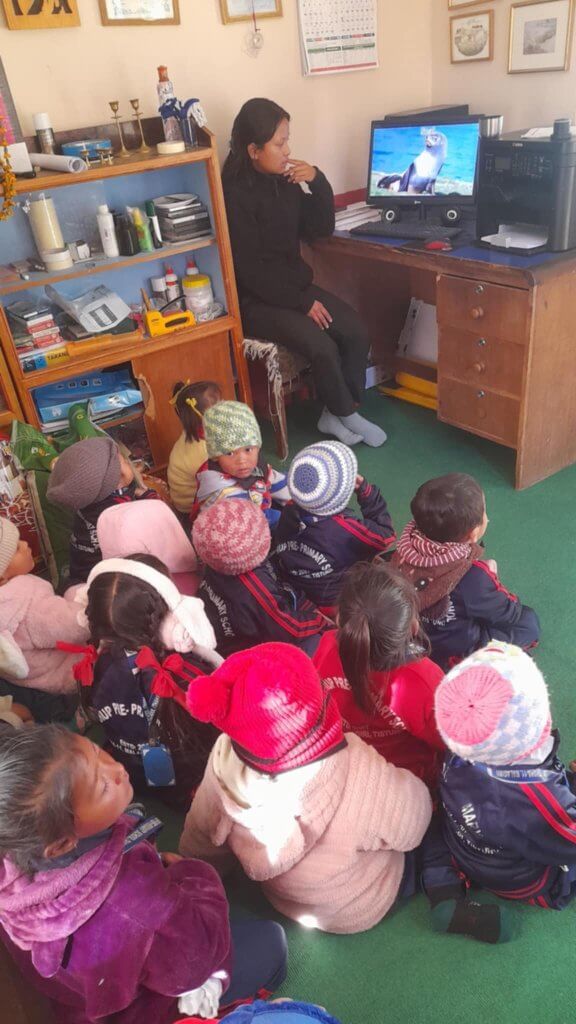
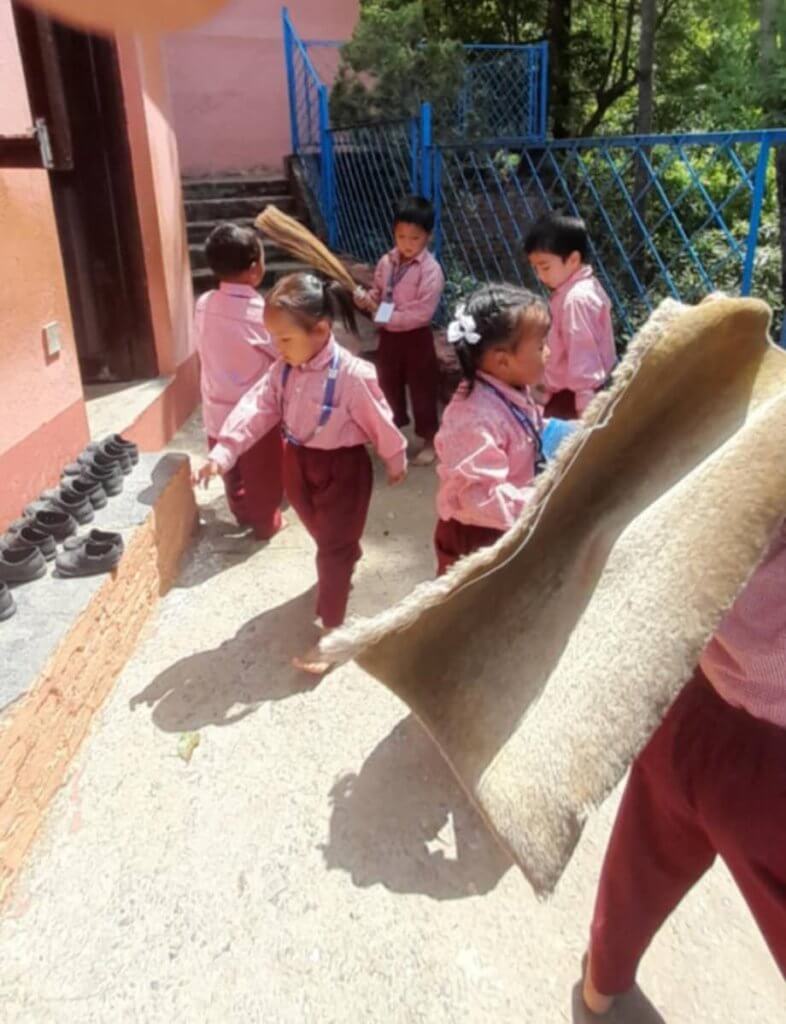
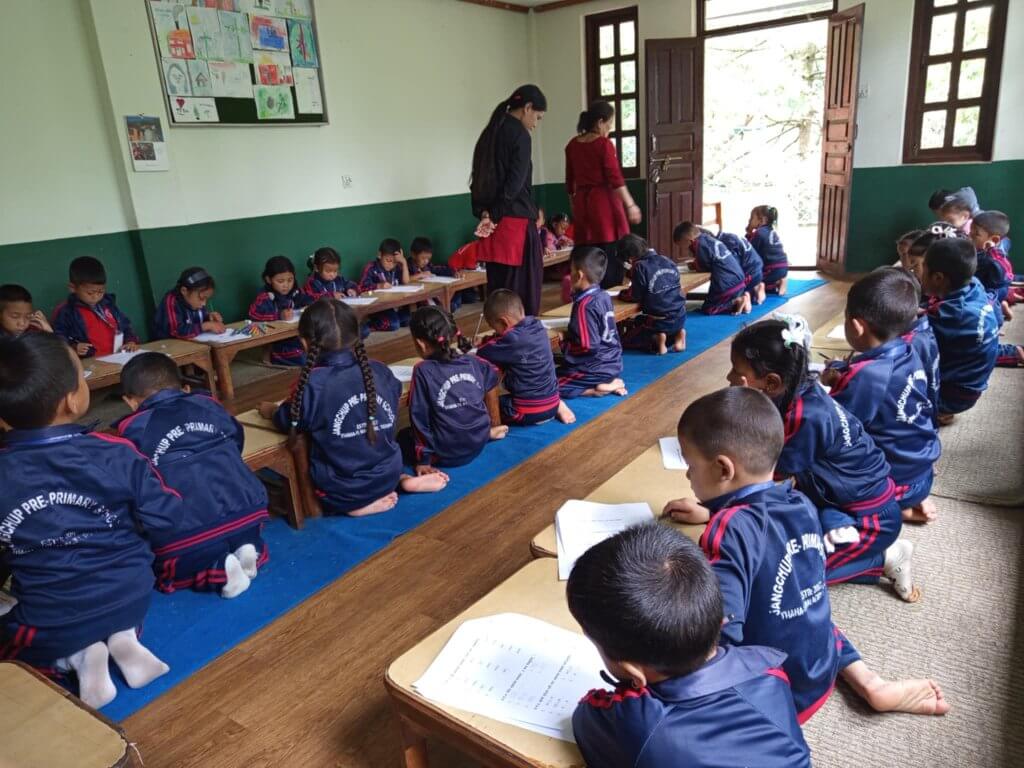
The children attend school six days per week and on Saturdays there will be a variety of creative activities, along with perhaps cartoons to watch on the school laptop and time helping to sweep and tidy the class area.
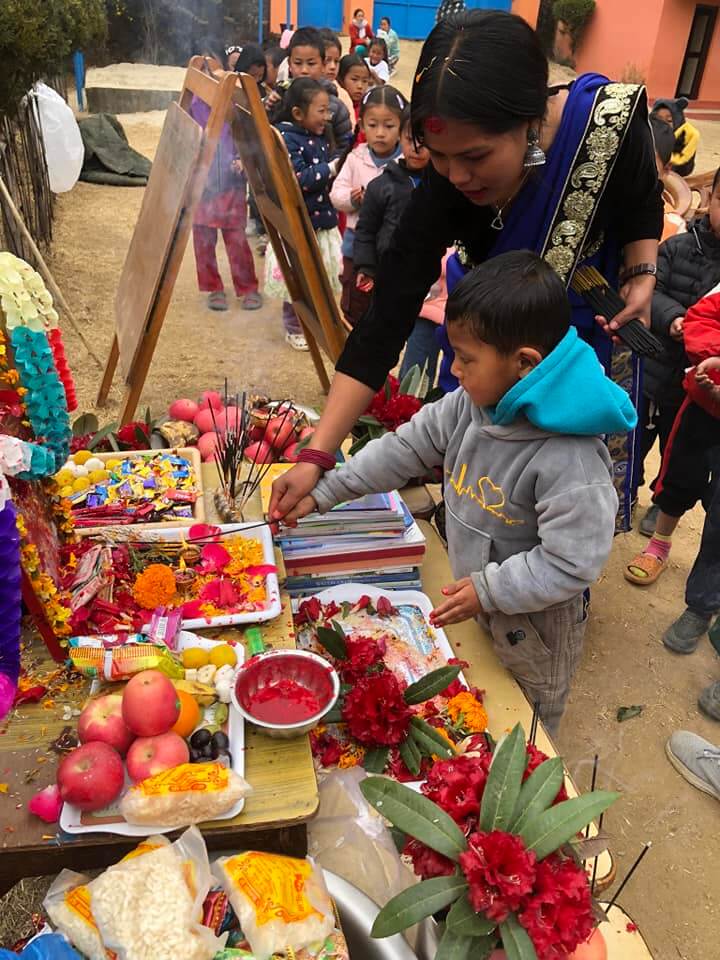
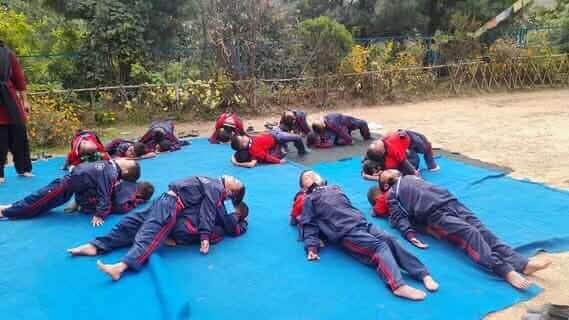
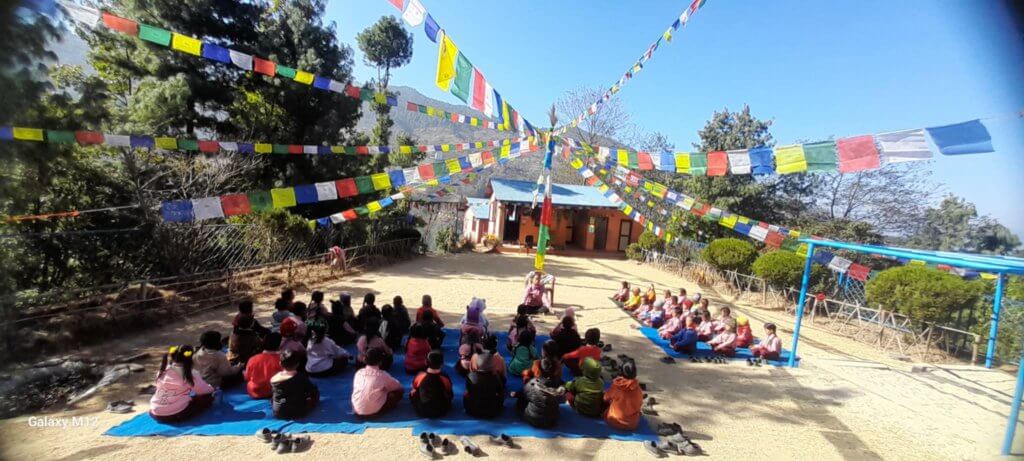
To follow the Nepali education system Malagiri school sets the children regular tests. Guidance including the rights of all children to an education is written in ‘State of Children in Nepal 2017’. Government of Nepal, Ministry of Women, Children and Social Welfare. Central Child Welfare Board’
While festivals at school mostly follow Hindu traditions, there is influence from Buddhism and Christianity in celebrations and in family practices. The teaching focus is on shared human values such as kindness, wisdom and respect for other faiths.
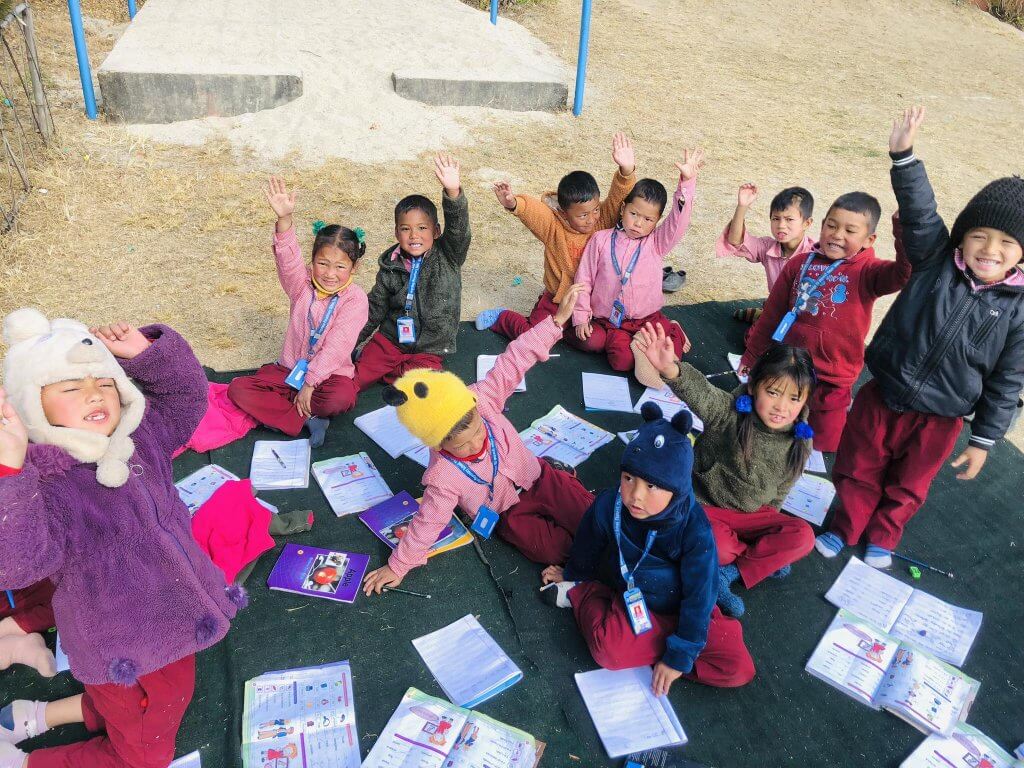
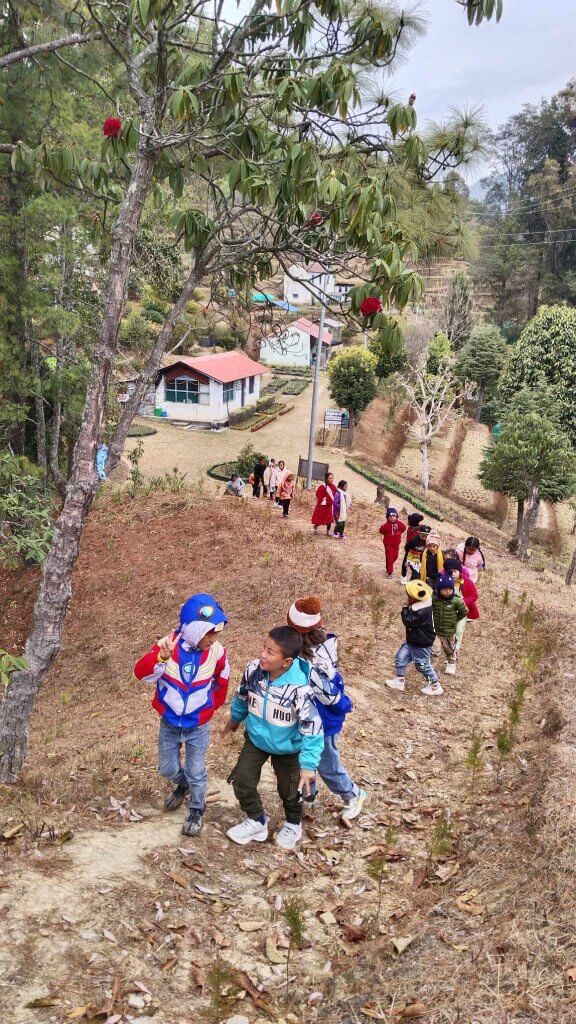
Future continuing education opportunities for our students.
Former pupils can continue their education at the Shree Manakamana Basic School (grades 2-5) but for most of them the Shree Bageshwori Secondary School (grades 4-9) is more suitable because of the level they have already attained at Malagiri School. The Secondary headteacher has been particularly impressed with the progress of the pupils and has praised their creative approach to learning.
